Ready to add products to your sales channel?
To start synchronizing products, you need to go to the Catalogue Management section:

Below, we’ll explain how you can add and exclude products from your synchronization, as well as the information you should consider before publishing them.
1. Add products

This is the first step to begin your synchronization. Choose the products you want to include in your catalogue. You can do this by category, brand, references, or CSV. We’ll explore each of these steps below.
1.1 Add products by categories
To select categories, use the drop-down menu in the category tree:
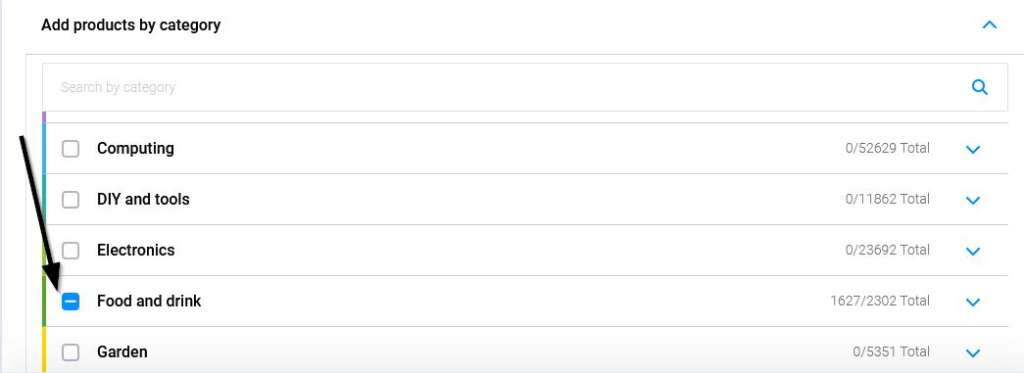
You can select both main categories and more specific sub-categories and combine them as needed:
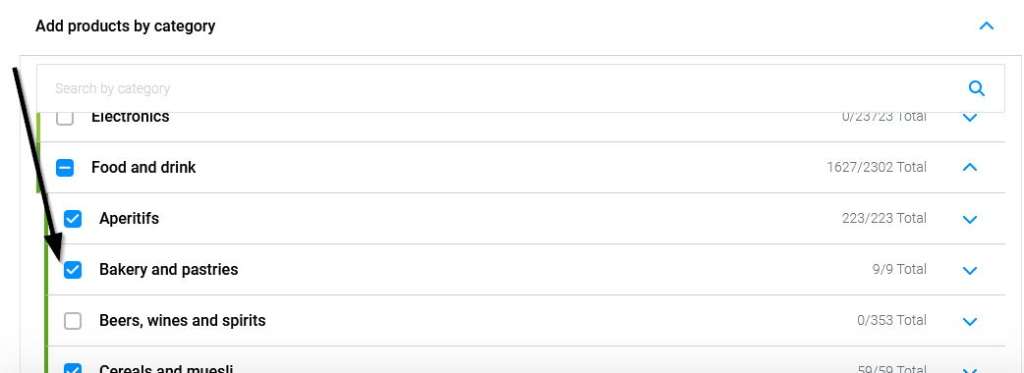
Important: If you select a parent category, all child categories will be included automatically.
1.2 Add products by brand
To select products by brand, click on the “Add Brands” button and search for the desired brands, then click “Add” to include them:

All products from that brand will be published in the sales channel, even if they haven’t been individually selected or aren’t part of the chosen categories.
1.3 Add products by SKU or CSV document
You can also add products from the BigBuy catalogue by searching by reference number (SKU) or importing a CSV file with the different SKUs of your interest.

You can download the CSV files directly from the catalogue, after searching by keyword or selecting one of the dynamic categories Hot Deals and Top Sales:

Another possibility is that the reference is already added to the inclusion or exclusion list.
2. Exclude products
In this section, we’ll learn how to exclude products from our synchronization.
2.1 Exclude products by price range
When synchronizing by categories or brands, some selected items may not fit your sales strategy due to their price, either too expensive or too cheap.
To exclude products by price, set a minimum and maximum wholesale price to exclude products within that price range from being published:

2.2 Exclusion by condition
Is your business idea to sell only new products? Or do you also want to take advantage of our selection of refurbished products? With this option, you can exclude products by their condition (new or refurbished) by checking the corresponding box:

2.3 Exclude products by brand
If you’re interested in excluding one or more brands from your sales channel, click the “Exclude Brands” button and search for the desired brands. Then click “Add” to exclude them from your synchronization:

2.4 Exclude products by SKU or CSV document
Similar to inclusion, you can exclude products by searching by SKU or importing a CSV file with the different SKUs you want to exclude:

2.5 Exclude products with shipping restrictions outside the European Union
If your business strategy also targets customers residing in non-EU countries, you can exclude products with shipping restrictions outside the EU by simply checking the corresponding box.
Some products in our catalogue have shipping restrictions to countries outside the European Union (EU) indicated by references starting with S71*, S72*, S74*, S83*, S91*. If you sell within the EU, you don’t need to activate this functionality.
Otherwise, we recommend activating it to avoid problems with products that cannot be shipped outside the EU.

3. Selected products
In the “Selected” tab, you can see your current selection and the reason why each product was selected (by category, brand, etc.). Similarly, you can check why some products are excluded from your selection:
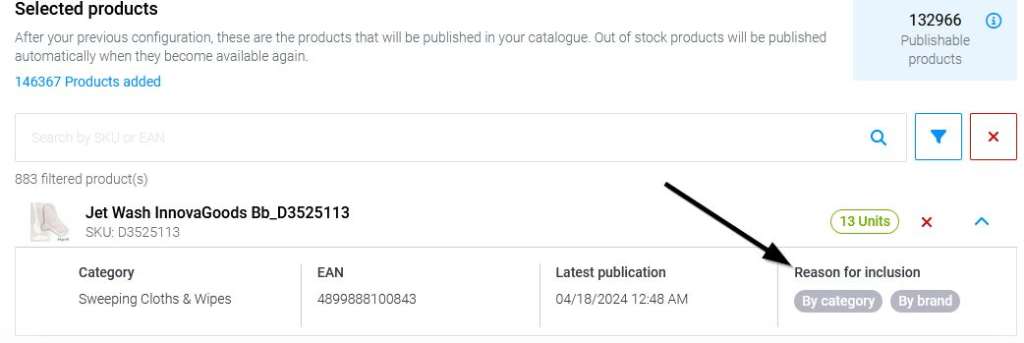
If you want more information about a specific product, go to the “Products” section (in the left menu of the Multi-Channel Integration Platform) and enter the SKU or EAN of the product. Click the view icon to check its status and price.
4. Excluded products
Similar to the “Selected” tab, in this section, you can check which products are excluded from your sales channel and verify the reason for the exclusion:

5. Non-selected products
In this tab, you can see the list of products that you haven’t selected in your range of chosen products for publication:

6. Additional settings
In this section, you can select more options to perfectly align your synchronization with your business strategy.
6.1 Update product images
The products in the BigBuy catalogue may have image changes, so it’s recommended to update them automatically. If you choose not to, remember that only in the first publication of the channel (or a new product is published) will all product information be sent for its correct creation in the channel:

6.2 Add custom text in product description
This feature allows you to add custom text to all descriptions of your synchronized products. Depending on your business strategy, you can specify, for example, that you don’t ship to certain geographic areas or use a commercial appeal phrase for your business:
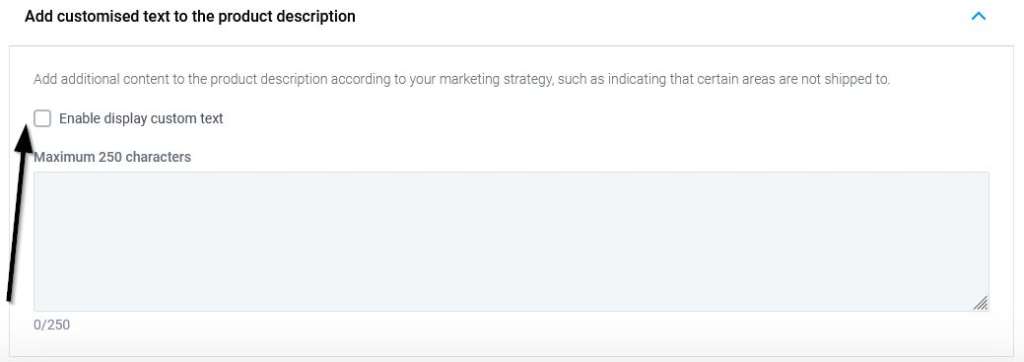
6.3 Text customization for SEO
By default, BigBuy publishes all product information for its correct creation in the channel. Note that this will affect every new product you publish. If you want to customize the texts of the product sheet or the title, select below which element you want to customize in the channel. Once the desired option is activated, data updates will not affect the changes you have made:

6.4 Units for sale per product
By default, some sales channels like eBay impose a restriction on new accounts for the maximum amount for sale. For this reason, we put one unit for sale of each product to publish the maximum number of products and have more chances of selling.
If you want to publish more units per item, select this option and define the maximum stock to be published per range. Note that if you have publication limitation, this option will affect the number of published items:

7. Things to consider
- Each new publication overwrites the previous one. If you want to add new products without removing the previous ones from your store, you must maintain the first selection and expand it.
- The maximum number of products to select for Ecommerce is 25,000. Additionally, 5,000 publications are reserved for publishing news from the selected categories.
- If different categories, brands, and products are selected, all of them will be displayed. For example, if we select the category “kitchen” and the brand Bosch, not only Bosch washing machines or hoods will be displayed, but also products like drills, since the entire brand, as well as the entire category kitchen, is added.
- Exclusion prevails over selection, so if we select the category kitchen and exclude Bosch, no products from this brand will appear, not even those in the kitchen category.
- Inclusion by SKU prevails over exclusions. If we include a product by SKU, it will be considered selected in any case, even if we exclude by price range, brand, or product condition.
- The only exclusion that overrides the inclusion by SKU is the exclusion due to shipping restrictions, explained in paragraph 2.5 of this article.
- It is not necessary to publish by categories. If desired, you can add brands or even a complete list of products using the reference selection.
- Remember to go to the last step and click on “Publish” when you have all the changes ready and want them to be applied.
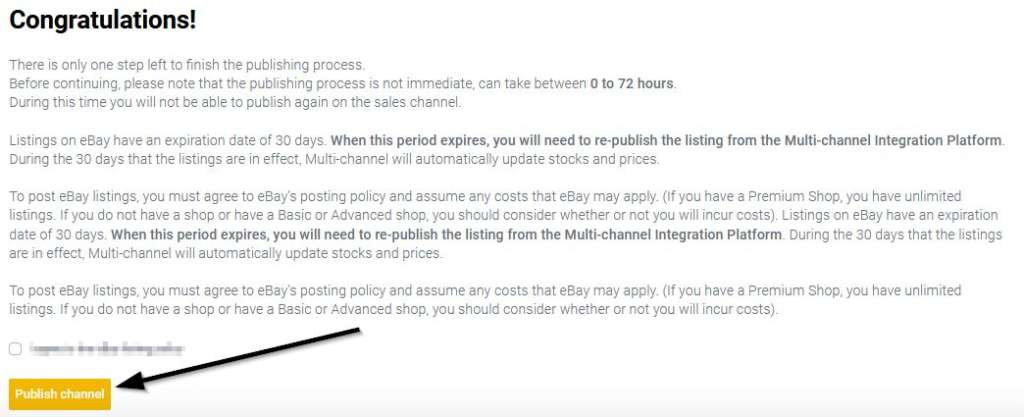




 Contact
Contact

